Hello and happy Wednesday, vintage lovers!
A few weeks ago, I posted a picture of me wearing a Fair Isle sweater on the Facebook fanpage.
Vintage lovers went NUTS for it! Until posting the pic, I had no idea Fair Isle was so on fire as a sweater trend for the season! Since you are all always inspiring me, I made it a priority to do further research on exactly what Fair Isle is.
What I found? A wealth of vintage fashion knowledge that I’ve tried to break down into easily digestible bits of know-how for all of your to enjoy and refer back to as reference.
Not only is the Fair Isle design currently popular thanks to designers recently integrating the knit patterns into their winter 2010 collections (last season’s trends which continue to influence vintage ones), but my research proved that it’s a tried and true classic much like argyle, houndstooth or stripe prints. In other words: One can never go wrong with a Fair Isle sweater!
What I also found? Who knew that if it weren’t for the Prince of Wales wearing a Fair Isle sweater vest in 1921, we may not have the blessings of this trend today? Or that World War II rations potentially influenced why Fair Isles jumped stateside and became an en vogue knitting pattern by the ’50s?
Keep reading after the jump for further details on those crazy facts above, plus more the who, what, where, when, why and how of the Fair Isle sweater trend!
Perhaps I should have been a history major in college, but it’s thanks to my journalism degree that I enjoy rubbing the elbow grease into these posts to truly make them shine and worth your time to read and hopefully, share with other vintage lovers on Twitter and Facebook or wherever you please over the World Wide Web!
Considering tomorrow’s Thanksgiving, I have to express my gratefulness to everyone here for taking the time to absorb the information I hope to pass onto you! It means a TON when you leave a comment or send me an email about this site. Also, I appreciate your advice, suggestions AND corrections.
We are one another’s teacher. I am your teacher as much as you are mine! And that is why vintage fashion lovers must unite: For the good of style and the joys of collaborative creative connection.
Happy almost Thanksgiving, everyone … and happy Black Friday vintage FAIR ISLE SWEATER SHOPPING!
xx, SD
THE HISTORY: SHETLAND ISLANDS
WHERE IT’S FROM: The Shetland Islands, located off the coast of Scotland. The island strip consists of 20 different islands, one of which is called FAIR ISLE and is only about 6 square miles. Because this knitting design was born here, it was named after this island.
Today, the island has approximately 70 inhabitants living on its southern tip. To visit, you must catch one of the three 8-seater planes which fly to and from the island roughly 3 times each day during the busy season.
You can find the email to contact for purchase of a bonafide made-on-Fair-Isle-Fair-Isle sweater here, made with love on the islands and marked with a label of authenticity.
WHEN IT WAS BORN: General knitting of the Fair Islanders has roots to as early as the 16th century — according to the Victoria & Albert museum site, an excavated 16th century grave revealed a skeleton alongside knitting tools.
But colorwork knitting took off in the 18th century because “lace knitting” was beginning to become mechanized and the people of the island needed to re-invent the industry of hand knitting in a way which could not be mechanized.
Thus, Fair Isle knitting grew out of a need to freshen the economy of knitwear demand from the island. Handknitted products were arguably more labor intensive than that from a machine, so the Islanders could charge appropriately for the hand knit stockings, capes and scarves they were primarily making at the time (sweaters only became popular around World War I — see below!).
HOW IT WAS BORN: In my research, theorists debate how the Fair Isle influences were born in the minders of the islanders themselves. Was it thanks to influences from nearby Scandinavia? Or the Spaniards who landed on the island in the 1500s, and may have passed down designs of geometric shapes into the hereditary consciousness of the islanders thanks to the own fashions they were wearing at the time? There were no conclusions, at least none that I found.
Perhaps there greater cultural dissection of the design to be optimized here — but either way, I assume it’s safe to say that the designs and act of multicolor knitting was born in the imagination of these creative islanders.
The “mainstream trend” of Fair Isle colorwork knitting, however, only became big enough to trickle into commercialization in the 20s. It had revivals in the 40s and has enjoyed steady success as a classic knit design ever, a mainstay alongside argyle, stripes, cableknit, etc.
FAIR ISLE KNITTING
WHAT: “Fair Isle” knitting is the act of stranding yarn into horizontal layers of motifs (traditionally designed with crosses, diamonds, eight-pointed stars and other geometric shapes) of two different colors. Traditional colors are red, blue, orange, brown and purple.
When the sweater style became popular in the ’20s, the muted colors of browns, greens, grays and creams became more popular than the traditional brights.
WHAT IT’S NOT: Many websites and references point to Fair Isle knitting as being “any design of patterns of multi-colors.” This is a loose definition, adapted for modern times and trends, undoubtedly a reflection of how Fair Isle has been commercialized and mass produced.
Traditional Fair Isle design are these key things: (1) horizontal colorwork designs consisting of (2) only TWO different colors and using the colors (3) of red, blue, orange, brown and purple. These colors are derived from different kinds of sheep on the island, as well as natural dyes available to the islanders.
When synthetic dyes were invented in 1850s, the color palette for colorwork knitting by Fair Islanders understandably expanded.
FROM RURAL TO ROYAL & REVERED
WHY IT WAS BORN: Fair Islanders turned to knitting to not only protect their fisherman from the wear and tear of the cold while dressed in their hand knit wool garbs, but to also fulfill the 16th-century onward demand for hand knit lace garments (until mechanization in the 1800s) and for hand knit wool garments.
Before being sold (probably in the 1800s) for currency value, anything knit were used as bartering devices for food, tools and anything imported from nearby Ireland.
Flash forward to the 20th century: The “Fair Isle” sweater trend was actually popularized by the Prince of Wales, who wore a Fair Isle design sweater vest (called “tank tops” by the English, much like an American sweater is referred to as a “jumper” in the UK, too) and ignited a trend among his followers and people to do the same.
This lovely prince influenced Princess Mary (his sister) to wear Fair Isle garments as well. And much like the Middleton Sisters influence fashion in the UK and First Lady Michele Obama has made us all run to J.Crew again, the wardrobe decisions of the royal family a la the 20s ignited timeless trends because the people wanted to emulate their style and class.
MODERN TIMES: Then came World War II, when American soldiers were shipped to the shores of Europe and saw fashions that they had never seen en mass before — including the Fair Isle trend.
It makes sense then that these soldiers would probably purchase and/or take home a few pieces speaking to the cultures of the countries they visited when fighting abroad. I can remember my Great Aunt telling me how her husband brought her home hand threaded clutches from India after his stint as a pilot in World War II.
My Great Uncle Eddie decided they would be a good gift for his gal back home — my Aunt Anne, who is still alive and kicking today at 91 years old! So many other foreign fashions were imported stateside from the war. Thanks boys, for bringing fashion forward with influences from abroad!
1920s: CASUAL DAYWEAR
Photos thanks to Polar Bear’s Tale Blog
1930s: SPORTSWEAR
Photos thanks to Polar Bear’s Blog
VINTAGE KNITTING TREND OF THE 1940s
Photos thanks to My Happy Sewing Place
THE WAR’S INFLUENCE ON FAIR ISLE TRENDS
WHY DID FAIR ISLE SWEATERS EXPERIENCE A RESURGENCE IN THE ’40s?
This is the question I found myself asking as I performed research for today’s post.
It made sense that after a Prince was seen wearing the Fair Isle style, that the style would trickle into the style consciousness of the masses and remain a timeless trend.
But the fact that the Fair Isle trend only became popular in the STATES in the ’40s was perplexing to me. Had there been a Hollywood starlet who upon returning from travels abroad, was seen wearing a Fair Isle sweater in a popular film or on the equivalency of the “red carpet” which existed in the day?
MY (HUMBLY THEORIZED) CONCLUSION: I stumbled across this amazing resource of vintage fashion and culture web site. I scrolled down to references of “Fair Isle” but didn’t find the answer to what I was looking for, until I noticed the picture I’ve added above.
It’s a notice to the people of Europe regarding war rations for clothing. While the states did not experience government-regulated rations like the UK, we were encouraged to be “patriotic” and make sacrifices where we could — both in food AND clothing. The war was a huge influence on the styles of the ’40s, and honestly calls for a much more in-depth post explaining it all to the benefit of your understanding, too.
But I digress: The reality is that because there were war rations on the amount of NEW clothes purchased — and because Americans were buying less new clothing, too — the practice of KNITTING undoubtedly became a skill that every woman adopted not only out of necessity’s sake, but vanity sake, too!
We wanted to have fashionable clothing that we enjoyed — and the act of knitting the Fair Isle look was an easy one to emulate and for sewing pattern companies to sell instructions for.
Not only this, but American soldiers returning home from World War II would logically have brought Fair Isle pieces to their families and their ladies-in-waiting. So while the Fair Isle trend may not have been popular in America pre-World War II, since more women knew how to knit than ever before post World War II, the Fair Isle trend could truly take off because the pieces from across the seas were finally in their hands for inspiration and duplication.
So the perpetuation of the design thanks to sewing pattern companies — as culturally made necessary because of war time clothing rations and WWII soldiers bringing Fair Isle pieces home to America — is MY personal theory why the Fair Isle style experienced a trend revival in the ’40s and through today.
In other words: The Fair Isle design trend only existed in the states after 1945, all because of a little ‘ole activity called WAR …
But is this the honest-to-goodness truth? Perhaps no one will ever know, but I’m sure that those who lived the era can explain why in better detail. While we can say “so and so wore that and so it became popular” or “so and so designer decided it was worth putting on the runway” to trace origins of fashion’s popularity to its roots, understanding vintage trends prior to the emergence of mass media is much more difficult.
It’s about doing your research, finding the facts and — with logic and reason — drawing your own conclusions to shed light on the questions us vintage lovers will never stop having!
INFOGRAPH: A (THEORIZED) FAIR ISLE TREND HISTORY
FAIR ISLE TRENDS TODAY
A quick Google search of Fair Isle sweaters produces a laundry list of mainstream options for the design.
But like I alluded to at the top of the post, Fair Isle is a LOOSE definition and mainstream brands — even big time design companies, as shown in the styles of the 2010 runways above — don’t design to honor tradition of what the colorwork style truly represents. They design to style, sell and secure consumer’s dollars.
But that’s OK! Because while a “true” Fair Isle sweater is hard to come by, we can apply knowledge and know-how in determining the most authentic representations of this historically significant design.
A great place to start is buying them vintage. I suggest searching with “Fair Isle sweater” and double checking the design against my three key descriptors listed above and repeated here for you: (1) horizontal colorwork designs consisting of geometric designs (diamonds, crosses, hexagons, etc.) (2) only TWO different colors and traditionally using the colors (3) of red, blue, orange, brown and purple. But muted colors (browns, grays, greens, creams) became popular in the ’20s, too. Just think classic colors — no neon, pastel or other unique hues.
TRADITIONAL STYLES AT A LITTLE WICKED
Hand Knit Fair Isle Sweater (Deadstock – New Old Vintage) from Iceland, $148
Hand Knit Fair Isle Sweater (Deadstock – New Old Vintage) from Iceland, $148
Interested in purchasing either Fair Isle cardigan above? We offer free shipping within the domestic US.
Please email me at the store, [email protected]!
BUY NOW ON ETSY!
Here’s an example of a truly traditional Fair Isle style. And to the thrifty (not to mention trendy) tune of only $45!
BUY IT NOW! 1960s Fair Isle Cream Cardigan, $45 on Etsy
What are your thoughts on Fair Isle sweaters? Love ’em, hate ’em, want to wear ’em a different way? (I’m digging the idea of Fair Isle leggings!)
Let me know in the comments below!


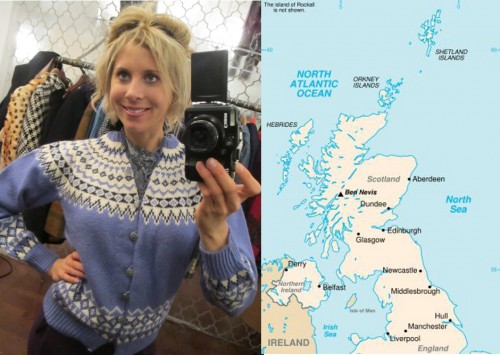
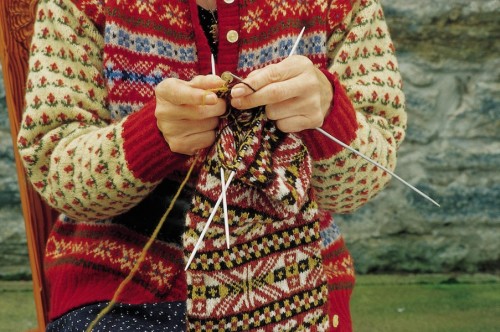
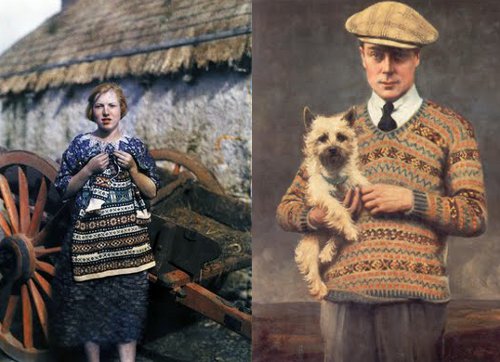
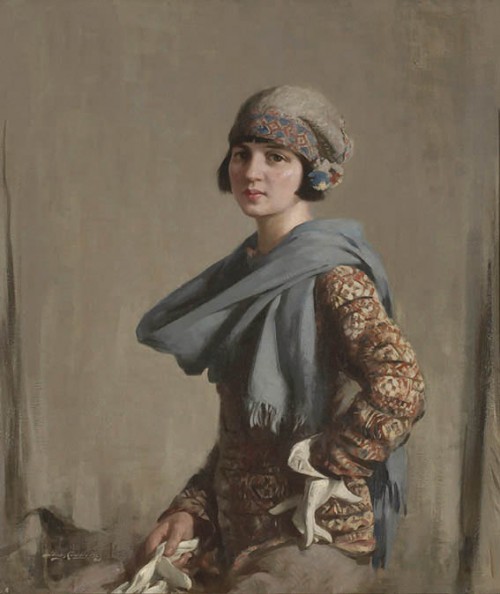
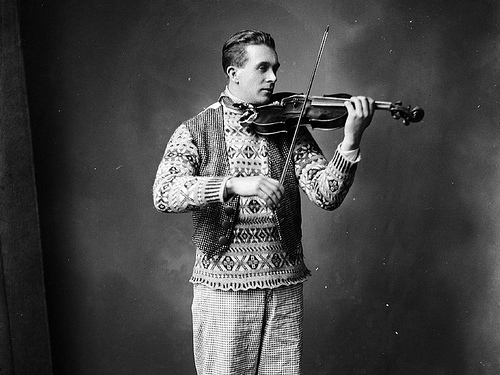
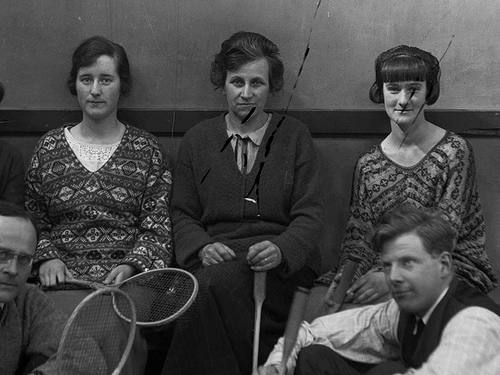
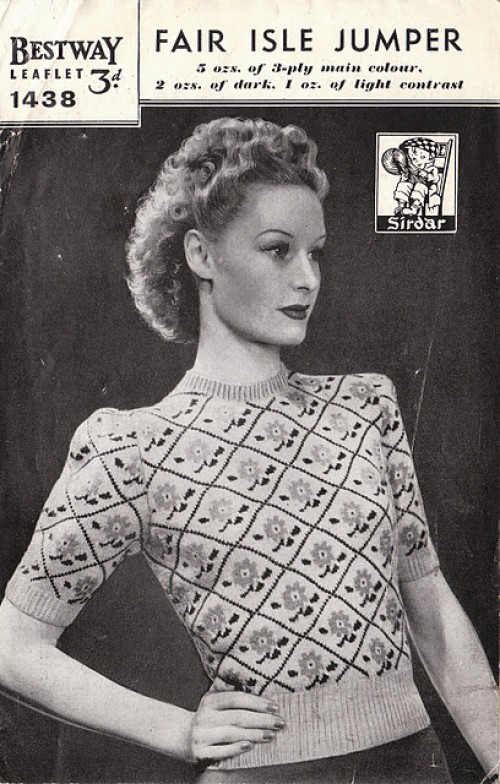
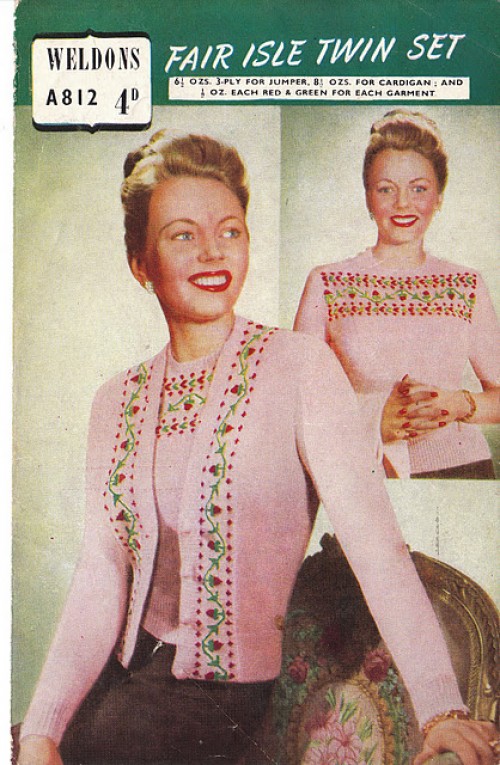
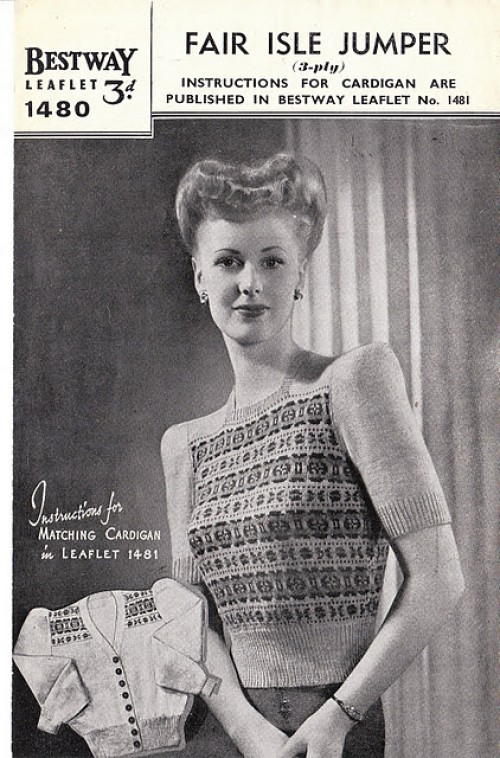
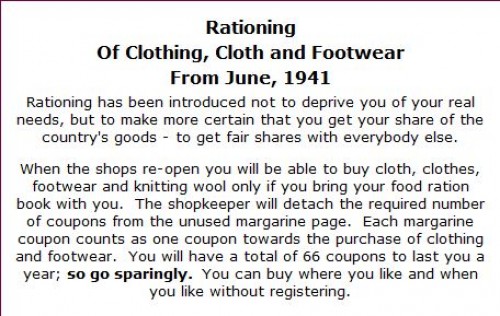
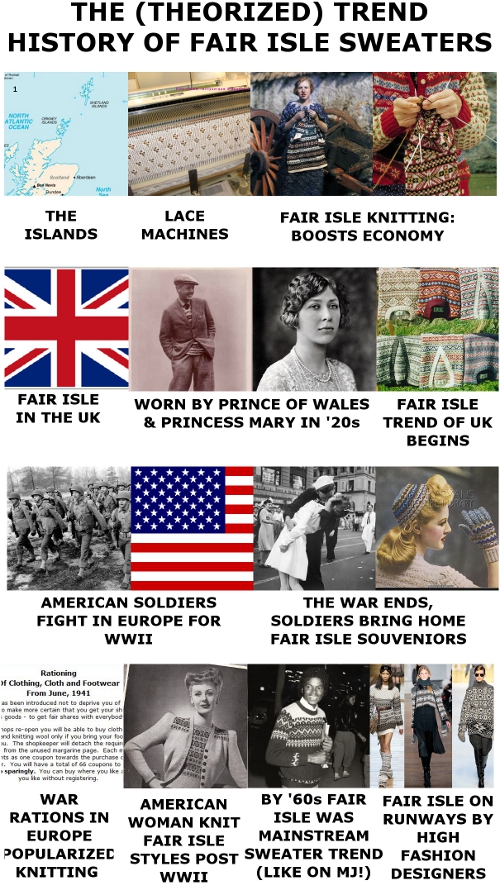
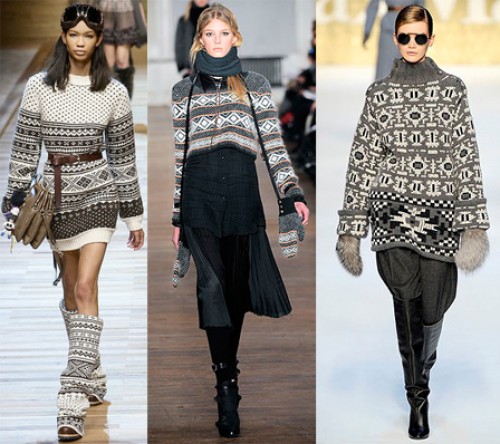
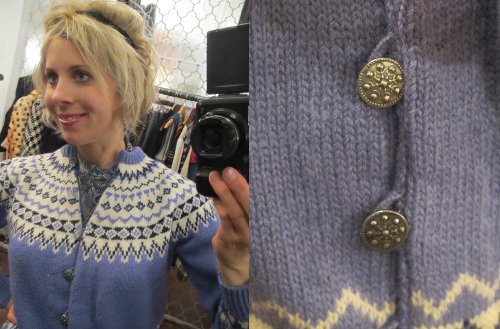
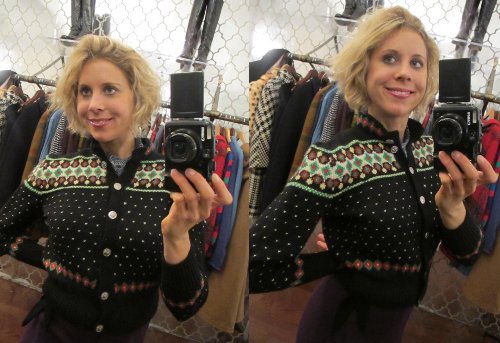
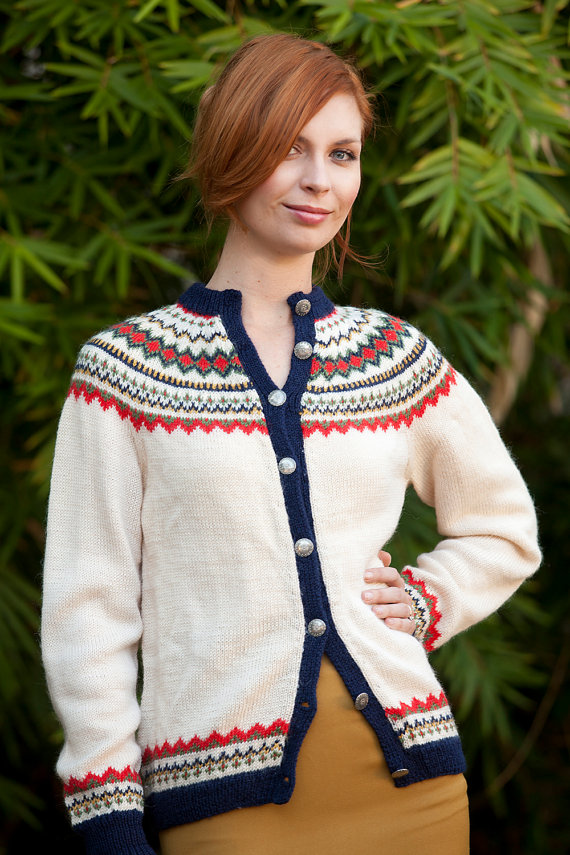
Sammy, I love how you really dig into a topic and provide such a complete history for us. As a relatively new vintage seller, this is incredibly informative, and your voice is such fun one to read. As always, a great read! Miss you, girl! :)
This is such an incredible post!! You’re amazing.
Excellent article, Sammy!
I really love this Sammy! You give so many detailed information that it is a real pleasure to read your posts! Please don’t stop feeding us with your vintage knowledge!
Another reason for the popularity of the style is that many men knitted (knitting guilds were originally men only). Especially sailors. I’m always finding vintage knitting booklets in thrift stores, and when I’ve brought them up to pay, a few times I’ve run into elderly gentlemen who comment that during WWII they were in the navy and did a lot of knitting while at sea! So they may have visited, learned the technique, then taught it to their wives and girlfriends when they returned home from the war!
XXX
Suzanne
Hi, Sammy I was wondering where did you find your researches at, because i am writing a paper for my English class about Fair Isle Sweaters…
hey Ellisa! Do you have a specific question? Shoot me an email, [email protected]. Most of my research came from various websites, I did not use any books for this post but oftentimes I do. xx
I had a few fair isle sweaters in highschool in the 70s…I used to feel guilty about wearing the vest 3 days out of the week…but I couldnt resist,,,, still the most memorable piece of clothing I have ever owned..hard to find one similar the search continues!
I am in love with Fair Isle. My nails are currently painted in a fair isle pattern (,wish I could send you a pic of them) my momme found your site and I’m grateful, it’s the ultimate winter print. I have hats/gloves /sweaters. allll preppy, but I need one from the isle. Thank you!!
You are confusing Fairisle with Nordic knitting a lot dear.Metal snowflake buttons are a huge clue that it isnt a Fairisle.
Most of the sweaters you are showing as ‘Fair Isle’ are husfliden sweaters from NORWAY. LOOK IT UP. The two types of sweaters are not the same. Not same patterns, not same wool, not same style. Husfliden are amazing, a long tradition. They are not Fair Isle.
As a knitter from Shetland I find your initial research not bad but all the garments you show are clearly not Fair Isle, as you point out it needs to have two colours in a row.. which none of the garments you show at the end have.. they are all Scandinavian design rather than Shetland. The vintage patterns also mostly are not Fair Isle. The term has been totally commercialised and unfortunately by posting things like this you are furthering the mistruths.
I like how you explained that Fair Isle knitting is done by hand and was fresh new way of knitwear. I like the idea of having knitwear clothing that is handmade. It would be unique to you and you could brag about it being handmade rather than made by a machine.
I have a modern ‘Fairisle’ OR Nordic style cardigan in bright pink that I actually love, but it’s too small to wear so I’m gonna try sell it! I hope somebody else will love it as much as I do!
Thoughts on the violinist’s hem? A design choice, or a knitter who didn’t know the twisted German/Old Norwegian cast on? Also, the link to Polar Bear blog is a dead end. Can you tell is more about photo provenance? Thank you!